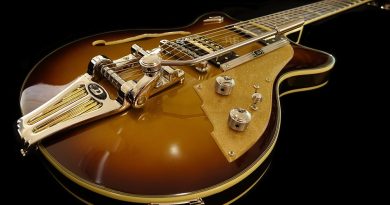– Unlocking the Code: A Beginner’s Guide to Reading Guitar Tabs
Unlocking the Code: A Beginner’s Guide to Reading Guitar Tabs
As a beginner guitarist, learning to read guitar tabs is an essential skill that will greatly enhance your playing abilities. While traditional sheet music can be daunting for new musicians, guitar tabs provide a simplified way to read and play music on the guitar. In this article, we will explore what guitar tabs are, how to read them, and some tips for mastering this valuable tool.
What are Guitar Tabs?
Guitar tabs are a form of musical notation that specifically notates how to play a song on the guitar. Unlike traditional sheet music, which uses staff notation to represent pitch and rhythm, guitar tabs use a series of numbers and lines to indicate where to place your fingers on the fretboard.
Each line in a guitar tab represents a string on the guitar, with the bottom line typically representing the low E string and the top line representing the high E string. The numbers on the lines indicate which fret to press down on that string. For example, a “3” on the bottom line would mean to fret the third fret on the low E string.
Reading Guitar Tabs
To read guitar tabs effectively, you will need to understand some basic symbols and conventions. Here are a few essential things to know:
– Vertical lines separate measures, just like in traditional sheet music.
– Numbers on the lines indicate which fret to play.
– “0” or “x” on a string means to play that string open or to mute it, respectively.
– Arrows (< >) indicate bending or sliding the note.
– “H” indicates a hammer-on, where you fret one note and then hammer down onto another note without picking.
– “P” indicates a pull-off, where you pluck a note and then pull off to a lower note.
– “T” indicates a tap, where you use your picking hand to tap on a fret higher than you could reach with your fretting hand.
Tips for Mastering Guitar Tabs
Here are some tips to help you master reading and playing guitar tabs:
1. Start with easy songs: When first starting out, choose simple songs with basic chord progressions to practice reading tabs. This will help you get comfortable with the format and develop your finger dexterity.
2. Slow down: Take your time when reading tabs, especially if you encounter unfamiliar symbols or techniques. Break down the music into smaller sections and practice each part slowly before attempting to play at full speed.
3. Memorize the fretboard: Familiarize yourself with the notes on the fretboard to help you quickly locate the correct frets when reading tabs. This will also improve your overall understanding of music theory.
4. Use a metronome: Practice playing along to a metronome to improve your timing and rhythm. This will help you stay on beat and ensure that you are playing the music accurately.
5. Watch tutorials: Utilize online tutorials or instructional videos to help you better understand how to play certain songs. Many guitarists share tutorials on popular songs, making it easier for beginners to learn new music.
6. Practice consistently: Like any skill, learning to read guitar tabs takes practice. Set aside regular time each day to work on your tab reading skills and you will see improvement over time.
Conclusion
Learning to read guitar tabs is a valuable skill for any guitarist, beginner or advanced. By understanding the basics of guitar tabs and practicing regularly, you can unlock a world of music and expand your playing abilities. Remember to start with easy songs, take your time, and utilize resources like tutorials to help you along the way. With dedication and practice, you will soon be able to read and play guitar tabs with ease.






